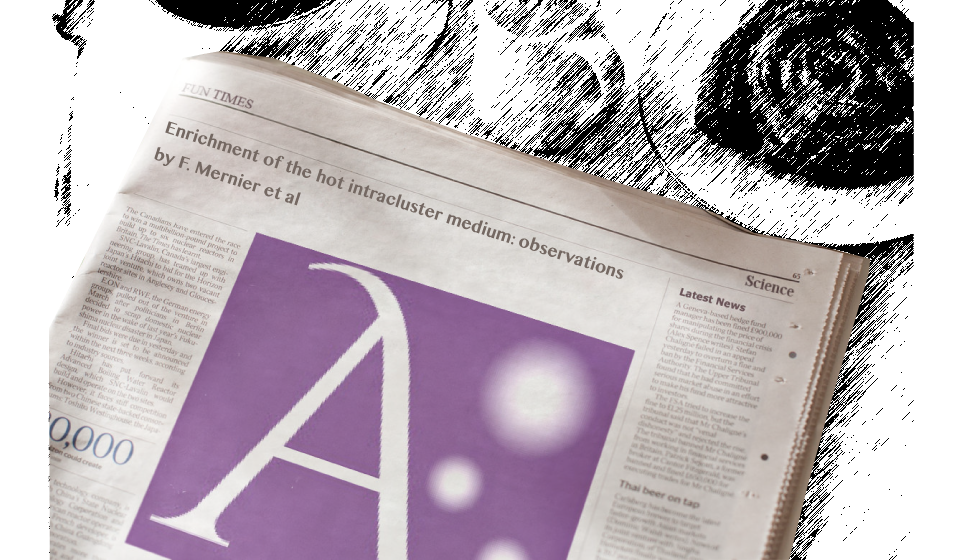
Enrichment of the hot intracluster medium: observations

By F. Mernier
Four decades ago, the firm detection of an Fe-K emission feature in the X-ray spectrum of the Perseus cluster revealed the presence of iron in its hot intracluster medium (ICM). With more advanced missions successfully launched over the last 20 years, this discovery has been extended to many other metals and to the hot atmospheres of many other galaxy clusters, groups, and giant elliptical galaxies, as evidence that the elemental bricks of life - synthesized by stars and supernovae - are also found at the largest scales of the Universe. Because the ICM, emitting in X-rays, is in collisional ionisation equilibrium, its elemental abundances can in principle be accurately measured. These abundance measurements, in turn, are valuable to constrain the physics and environmental conditions of the Type Ia and core-collapse supernovae that exploded and enriched the ICM over the entire cluster volume. On the other hand, the spatial distribution of metals across the ICM constitutes a remarkable signature of the chemical history and evolution of clusters, groups, and ellipticals. Here, we summarise the most significant achievements in measuring elemental abundances in the ICM, from the very first attempts up to the era of XMM-Newton, Chandra, and Suzaku and the unprecedented results obtained by Hitomi. We also discuss the current systematic limitations of these measurements and how the future missions XRISM and Athena will further improve our current knowledge of the ICM enrichment.

